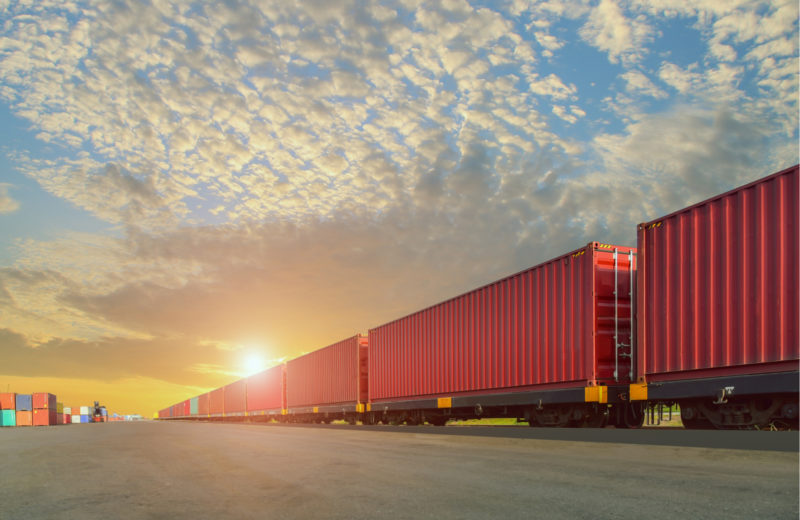Why Passenger Railways are Terrible and Freight Railways are Amazing

American railways are the envy of the world.
Many might shake a collective head at that statement. In the case of passenger rail that is an appropriate reaction. Since it was pieced together – a government-constructed Franken-rail system built of numerous bankrupt railways which were essentially nationalized – Amtrak has been a reliable money sink, losing tens of billions of dollars since 1970.
Any traveler that has used Amtrak to any significant extent has firsthand experience with the crumbling infrastructure, frequent delays, and general unpleasantness that accompanies U.S. passenger rail service. Even the oft-cited bright spot of Amtrak, the “high speed” Acela system (which shuttles between Boston and Washington D.C) pales in comparison when compared to high-end passenger rail systems in Western Europe, Japan, and China.
Bullet trains routinely travel at least 200 mph, whereas Acela trundles along at a pedestrian 84 mph, and there is no indication (and probably no intention) of that gap closing anytime soon.
U.S. passenger rail services in general are money-losing and antiquated versus their global counterparts, an inarguable (and to public transport proponents, embarrassing) fact. Passenger rail is just one part of the story, and serves as an excellent example of how not to manage a rail system. In fairness, efforts to turn Amtrak around (mainly through aggressive cost cutting) do seem to be having an impact, as current year losses total a shade under $30 million. It’s an admirable effort to be sure, but decades of losses, poor service, and general mismanagement cannot be ignored.
The U.S. freight railway system, conversely, is the envy of the world, and this is not hyperbole or chest thumping; the facts back it up. Since the Staggers Act of 1980, which deregulated freight rail, improvements have been substantial. U.S. freight railways carry 81% more ton-miles of freight, and costs have fallen 46%. (It isn’t common for an industry to increase its capacity by 81% while reducing costs by nearly half.) That level of success has even been noted by the Community of European Railway and Infrastructure Companies, which might be surprising, given the common assumption that Europe has a monopoly on rail excellence.
Compared side by side, it seems a conundrum: Amtrak limps along, still relying upon billions of dollars worth of taxpayer-financed subsidies, while U.S. freight railways evince growing profitability and capacity amid rapidly falling costs. Why are U.S. freight rails so profitable when U.S. passenger rail – sometimes traveling the same routes, on some of the same rails – remains a perennial money pit?
Why the disparity
The answer is, as is so often the case, the incentives that face the private sector versus those which confront government actors. Freight rail has been deregulated and privatized for decades, which has subsequently given rise to increased capacity, reduced costs, and – in a feat that, some years ago, was said to be impossible – nearly come to par in terms of tonnage with the U.S. trucking industry. (At one point, a transportation industry adage held: “Trucks killed the trains, overnight air freight killed the trucks, and drones will kill overnight air freight.”)
It may rightly be pointed out that nations like Japan and the Western European countries are much smaller than the contiguous United States, and thus are more conducive to rail systems as a means of mass transit. On the surface this seems to open and close the arguments for why U.S. passenger rail is, on the whole, unprofitable: the United States is just too big! However appealing at first glance, though, this argument is incomplete and provides only a partial explanation for the situation. Even along the Acela corridor that connects Boston to Washington D.C., just slightly over 400 miles – roughly the same distance from Toulouse to Paris – the service is routinely beset by delays and cancellations; profits (such as they are) are minimal at best when compared to borrowing costs and years of accumulated losses.
Western Europe and more recently China are often held up as shining beacons for passenger rail, with results that the U.S. should strive to emulate. A key component of the Belt and Road Initiative, for example, is dependent on the connecting of nations with high speed rail networks. But headlines fail to capture, or reveal, two exceptionally detrimental side effects which detract from broader national economic activity and fundamentally distort the capital allocation process.
The sheer volume of subsidies dedicated to propping up passenger rail networks, almost all of which are nationalized or quasi-nationalized, is stunning. European nations pour billions of euros into these networks annually just to keep them running, Chinese high speed trains have begun to justify the previously bottomless subsidies underpinning the build-out of these networks, and the $350 billion debt load incurred by Japanese National Railways has been cited by some as a contributing factor of the economic stagnation which has bedeviled the country since starting in the 1980s.
Another damaging side effect of the subsidization of passenger rail, particularly in Western Europe and Japan, is the underinvestment and lack of standardization for freight rail that result from mandates. European freight trains are shorter in length and lower in height than their U.S. counterparts, which makes shipping goods by rail more expensive and less efficient. Private markets would, facing the profit incentive that competitive marketplaces instill, eventually address these shortcomings, but are unable to owing to the subsidization and artificial support for passenger rail. European and Japanese freight trains are smaller and shorter because the entire system is geared toward transporting people, and passenger trains stop more frequently and in a shorter amount of space than freight rail does.
In other words: the government mandate, which is undergirded by taxpayers, prevents private sector actors from making the investments and changes necessary to make freight services competitive.
The takeaway
It is easy to point to the failings and losses accumulated by Amtrak and blame any number of external factors, but the underlying causes of these failures are neither new or complicated. Chartered by government mandate, and unable to exercise the same level of entrepreneurial initiative as its private sector counterparts, Amtrak seems fated to either continually incur losses or, perhaps, to limp along at a breakeven level without the ability to make the capital investments sorely needed to improve the customer experience – let alone to compete on a cost basis versus alternative forms of transportation.
The solution is not to mirror the massive subsidization of passenger rail seen elsewhere; these efforts misallocate capital, prevent the most efficient shipping of goods, and crimp economic investment. More subsidies and government funding are not the answer. To eventually be truly competitive and offer services that consumers actually seek, passenger rail should follow the example set by freight rail several decades ago. Would it remain the same? No. And that’s the entire point.
The United States has a world class freight rail system; it is only political unwillingness that prevents the importing of the same template into the passenger rail sector that is preventing the latter from becoming equally robust.













